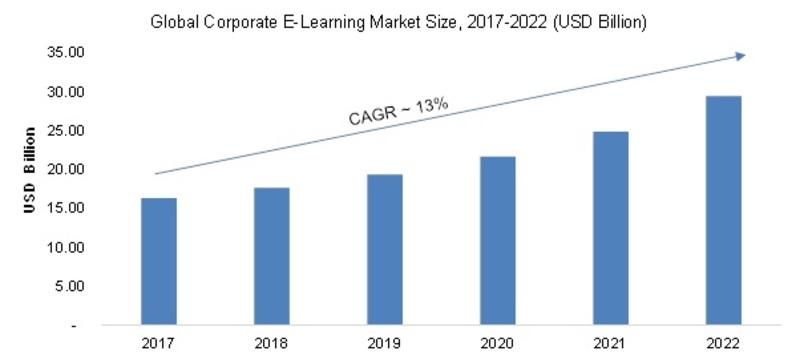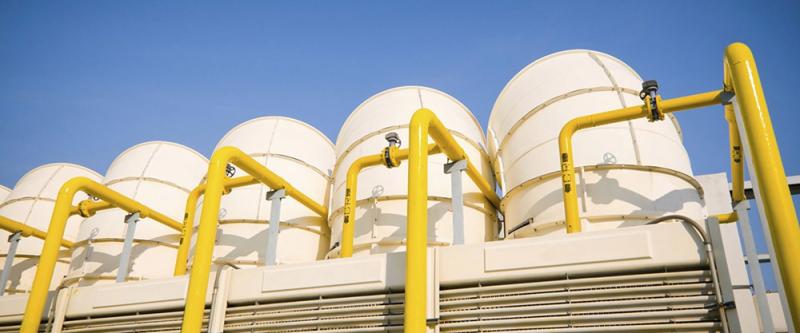Press release
Synchronous Condenser Market: ABB, Siemens, GE, Weg, Eaton, Andritz, Ansaldo Energia, Fuji Electric
Synchronous Condenser Market, By Cooling Type (Hydrogen Cooled, Air Cooled, Water Cooled), Reactive Power Rating (MVAR) (Up To 100 MVAR Synchronous Condensers, 100â€"200 MVAR Synchronous Condensers, Above 200 MVAR Synchronous Condensers), Starting Method (Static Frequency Converters, Pony Motors, Others), End-User (Electrical Utilities, Industries), Type (New Synchronous Condensers, Refurbished Synchronous Condensers), Geography (North America, Europe, Asia-Pacific, Middle East and Africa and South America)
Key players in the global synchronous condenser market are ABB, Siemens, GE, Weg, Eaton, Andritz, Ansaldo Energia, Fuji Electric, and Voith Group among others.
Click Here For a Free Sample + Related Graphs of the Report at: https://www.delvens.com/get-free-sample/synchronous-condenser-market-trends-forecast-till-2028
The estimated market size for the synchronous condenser is $591 million at a 2.7% CAGR, by 2028. North America is the largest regional market in the synchronous condenser market. It can produce reactive power which can lead to actual power by 90 degrees. The scope of the synchronous market is under high voltage equipment market, STATCOM market, power transformer market, synchronous motor market, synchronous generator market, Static VAR compensator market, and Shut reactor market. The need for power factor correction is increasing day by day. The synchronous condenser market is segmented into three cooling types air-cooled, hydrogen-cooled, and water-cooled. Air-cooled provide 2000+ MW inertia, provide instant power feed and short-circuit strength to grid networking system. Hydrogen-cooled, the highest cooling type market of synchronous condenser market. It can provide high thermal conductivity with low density. It is a highly preferable market with high specific heat.
A synchronous Condenser is a synchronous machine used to improve power factors to regulate voltage variation. It is a motor that works without mechanical load. It can excite the field winding and generate volt-ampere (VAr). It is used to cool down the system and maintain the voltage desired. It contains a shaft that is not connected to anything but rotates freely. It can adjust the required terms for the electrical power transmission grid and set out the levels of electricity coming from the reactive power and into a grid. The lower power factor draws more current with electrical load and puts more load on the distribution system. Power Factor Correction maintains stability by the use of a synchronous condenser, which can increase efficiency. It is used in the modern-day power grids or renewable resources sites like Solar Farms, Wind Farms, hydropower farms, nuclear power plants, and coal-fired plants, where electricity is created or electricity distribution networks. Synchronous condensation has a high maintenance cost.
Over-excitation - when the motor is working at a leading power factor where the motor draws a leading current, and it acts as a capacitor. When the current is led by the voltage at 90 degrees. Under-excitation - when the motor is operated as a lagging power factor, it draws a lagging current from the system and provides a leading current and it acts as an inductor.
Why do we use Synchronous Condenser?
Transformers are set up in an industry to increase the current and efficiency of the system. With the increased current, the heat loss for the setup is higher. As the power is directly proportional to the square of the current. It increases heat loss in the system.
P = I2R
H = Pt
And the result may reduce the efficiency of the transformer due to an increase in the heat loss, and so the power factor decreases. To resolve these issues, we use Synchronous Condenser so that the current and voltage lead at a 90o angle and to improve the stability of the system. The continued operation increases the heat and reduces the efficiency of the system, and a synchronous condenser is used to cool down the system and maintain the voltage desired.
Recent Development
On 16 February 2021, ABB synchronous condenser is used by Statkraft in UK National Grid to target a zero-carbon electricity system. It can stabilize the power grid and control the amount of wind and solar power to rotate power plants. Where Statkraft signed a 10-year-long service contract with ABB. The system provides power compensation and short-circuits power capacity to ensure network frequency and voltage.
On May 13, 2020, GE provide two synchronous condensers to the Brindisi Terna substation an Italian operator. With a power consumption for each is up to the level of +250/-125 MVAr and 1750 MWs inertia. GE's synchronous condensers can provide consistent power flow to the grid and regulate the voltage to ensure reliable power availability. It can provide a reliable electricity grid to Italy for the growth of renewable power.
Direct Purchase of Synchronous Condenser Market Research Report at: https://www.delvens.com/checkout/synchronous-condenser-market-trends-forecast-till-2028
Power Factor Correction
Use to provide stability in power factor to unity to maintain electricity distribution network. It works by the use of a capacitor to maintain the current level, to compensate for the lagging current by creating a leading current.
power factor = active power (P)/apparent power (S)
(Where apparent power is the supplied power with no load, and the active power is the power consumed by the load while performing work)
If a motor can provide a useful current of 8 Ampere instead of 10 Amps due to the power factor of 0.80, with a 500-voltage load, we received an output of 500*8 = 4000 W. Without power factor correction we cannot get the appropriate output of 5000 V with 10 Ampere current. So, the use of power factor correction through a synchronous condenser is an urging need for society to reduce power losses. Power plants have the instant need for the Power Factor Correction to maintain the unnecessary strain on the electricity distribution network, owing to the regulations placed by the international organization EU and Environmental Protection Agency (EPA) standards. The improvement in power factor can reduce the power consumption, voltage drop in long wires, power loss in transformers, and more. It can provide the full strength of the power plant to supply electricity with full capacity and reduce the current demand from the supply.
STATCOM
A Static Synchronous Compensator is known as STATCOM used to regulate voltage variation by absorbing reactive current. It uses electronically commutated circuits for compensation and has fewer power losses than the synchronous condenser. It costs less than the Synchronous condenser with low maintenance. STATCOM is a well-used substitute for the synchronous condenser.
The working function of STATCOM is to regulate voltage variation, using an output voltage of STATCOM to regulate voltage variation, if reactive power demand increases then STATCOM increases the output voltage and balances the voltage between STATCOM voltage and system voltage. A STATCOM voltage maintains a zero angle between the system voltage and the STATCOM voltage. In case Va is more than the Vb, then the reactive power will flow from Va to Vb. and similarly with the magnitude of Vb being more than Va then the reactive power will flow from Vb to Va. With the increase in the system voltage, STATCOM can absorb the reactive power and hence stabilize the voltage to normal known as voltage regulation mode.
With some limitations STATCOM does not increase or decrease the output voltage, it can only absorb or supply reactive power to its limiting end not further. In this situation, current acts like a constant, and the process is known as VAR Control Mode.
Advantages and Disadvantages
It can easily adjust power and provide a seamless reactive power factor continuously.
Synchronous condenser can solve the inertia problem effectively, through its swing machinery. It can improve the voltage stiffness.
At extremely low voltage, it can perform tasks without any contingencies.
Synchronous condensation has a high maintenance cost.
Produce more noise and transient.
Cost for supplementary protection devices is added due to the high short circuit rating, but the feature can improve the system stability with weak interconnections.
Conclusion
The extinction of non-renewable resources is near, we are urged to find their replacement with renewable resources. With the increase in the demand for renewable resources for the development of electricity, the synchronous condenser can perform a key role to save power losses. Governments take initiation to reduce the power loss in the power plants, as 754 GW of electricity capacity produced by coal is expected to turn down in near future. The power loss major reason is the high-power factor which can be corrected by power factor correction using a synchronous condenser. The market scope for the synchronous condenser is high, with the largest market in North America. Besides the high maintenance cost of a synchronous condenser, it is highly used in renewable resource sites for electricity development due to its advantages. The conversion of the old power plants into the synchronous condenser is being performed in North America and Europe, it can eliminate the dependency on the thermal power plant. Availability of substitutes on large can bring a tough challenge to the synchronous condenser, but Synchronous condenser can provide a long service life and stability than others. Overall, the use of Synchronous Condenser use is increased in large megacities can boost the demand in the market.
Make an Inquiry: https://www.delvens.com/Inquire-before-buying/synchronous-condenser-market-trends-forecast-till-2028
Contact Us:
UNIT NO. 2126, TOWER B,
21ST FLOOR ALPHATHUM
SECTOR 90 NOIDA 201305, IN
+44-20-8638-5055
SALES@DELVENS.COM
WEBSITE: https://delvens.com/
About Us:
Delvens is a strategic advisory and consulting company headquartered in New Delhi, India. The company holds expertise in providing syndicated research reports, customized research reports and consulting services. Delvens qualitative and quantitative data is highly utilized by each level from niche to major markets, serving more than 1K prominent companies by assuring to provide the information on country, regional and global business environment. We have a database for more than 45 industries in more than 115+ major countries globally.
Delvens database assists the clients by providing in-depth information in crucial business decisions. Delvens offers significant facts and figures across various industries namely Healthcare, IT & Telecom, Chemicals & Materials, Semiconductor & Electronics, Energy, Pharmaceutical, Consumer Goods & Services, Food & Beverages. Our company provides an exhaustive and comprehensive understanding of the business environment.
Key players in the global synchronous condenser market are ABB, Siemens, GE, Weg, Eaton, Andritz, Ansaldo Energia, Fuji Electric, and Voith Group among others.
Click Here For a Free Sample + Related Graphs of the Report at: https://www.delvens.com/get-free-sample/synchronous-condenser-market-trends-forecast-till-2028
The estimated market size for the synchronous condenser is $591 million at a 2.7% CAGR, by 2028. North America is the largest regional market in the synchronous condenser market. It can produce reactive power which can lead to actual power by 90 degrees. The scope of the synchronous market is under high voltage equipment market, STATCOM market, power transformer market, synchronous motor market, synchronous generator market, Static VAR compensator market, and Shut reactor market. The need for power factor correction is increasing day by day. The synchronous condenser market is segmented into three cooling types air-cooled, hydrogen-cooled, and water-cooled. Air-cooled provide 2000+ MW inertia, provide instant power feed and short-circuit strength to grid networking system. Hydrogen-cooled, the highest cooling type market of synchronous condenser market. It can provide high thermal conductivity with low density. It is a highly preferable market with high specific heat.
A synchronous Condenser is a synchronous machine used to improve power factors to regulate voltage variation. It is a motor that works without mechanical load. It can excite the field winding and generate volt-ampere (VAr). It is used to cool down the system and maintain the voltage desired. It contains a shaft that is not connected to anything but rotates freely. It can adjust the required terms for the electrical power transmission grid and set out the levels of electricity coming from the reactive power and into a grid. The lower power factor draws more current with electrical load and puts more load on the distribution system. Power Factor Correction maintains stability by the use of a synchronous condenser, which can increase efficiency. It is used in the modern-day power grids or renewable resources sites like Solar Farms, Wind Farms, hydropower farms, nuclear power plants, and coal-fired plants, where electricity is created or electricity distribution networks. Synchronous condensation has a high maintenance cost.
Over-excitation - when the motor is working at a leading power factor where the motor draws a leading current, and it acts as a capacitor. When the current is led by the voltage at 90 degrees. Under-excitation - when the motor is operated as a lagging power factor, it draws a lagging current from the system and provides a leading current and it acts as an inductor.
Why do we use Synchronous Condenser?
Transformers are set up in an industry to increase the current and efficiency of the system. With the increased current, the heat loss for the setup is higher. As the power is directly proportional to the square of the current. It increases heat loss in the system.
P = I2R
H = Pt
And the result may reduce the efficiency of the transformer due to an increase in the heat loss, and so the power factor decreases. To resolve these issues, we use Synchronous Condenser so that the current and voltage lead at a 90o angle and to improve the stability of the system. The continued operation increases the heat and reduces the efficiency of the system, and a synchronous condenser is used to cool down the system and maintain the voltage desired.
Recent Development
On 16 February 2021, ABB synchronous condenser is used by Statkraft in UK National Grid to target a zero-carbon electricity system. It can stabilize the power grid and control the amount of wind and solar power to rotate power plants. Where Statkraft signed a 10-year-long service contract with ABB. The system provides power compensation and short-circuits power capacity to ensure network frequency and voltage.
On May 13, 2020, GE provide two synchronous condensers to the Brindisi Terna substation an Italian operator. With a power consumption for each is up to the level of +250/-125 MVAr and 1750 MWs inertia. GE's synchronous condensers can provide consistent power flow to the grid and regulate the voltage to ensure reliable power availability. It can provide a reliable electricity grid to Italy for the growth of renewable power.
Direct Purchase of Synchronous Condenser Market Research Report at: https://www.delvens.com/checkout/synchronous-condenser-market-trends-forecast-till-2028
Power Factor Correction
Use to provide stability in power factor to unity to maintain electricity distribution network. It works by the use of a capacitor to maintain the current level, to compensate for the lagging current by creating a leading current.
power factor = active power (P)/apparent power (S)
(Where apparent power is the supplied power with no load, and the active power is the power consumed by the load while performing work)
If a motor can provide a useful current of 8 Ampere instead of 10 Amps due to the power factor of 0.80, with a 500-voltage load, we received an output of 500*8 = 4000 W. Without power factor correction we cannot get the appropriate output of 5000 V with 10 Ampere current. So, the use of power factor correction through a synchronous condenser is an urging need for society to reduce power losses. Power plants have the instant need for the Power Factor Correction to maintain the unnecessary strain on the electricity distribution network, owing to the regulations placed by the international organization EU and Environmental Protection Agency (EPA) standards. The improvement in power factor can reduce the power consumption, voltage drop in long wires, power loss in transformers, and more. It can provide the full strength of the power plant to supply electricity with full capacity and reduce the current demand from the supply.
STATCOM
A Static Synchronous Compensator is known as STATCOM used to regulate voltage variation by absorbing reactive current. It uses electronically commutated circuits for compensation and has fewer power losses than the synchronous condenser. It costs less than the Synchronous condenser with low maintenance. STATCOM is a well-used substitute for the synchronous condenser.
The working function of STATCOM is to regulate voltage variation, using an output voltage of STATCOM to regulate voltage variation, if reactive power demand increases then STATCOM increases the output voltage and balances the voltage between STATCOM voltage and system voltage. A STATCOM voltage maintains a zero angle between the system voltage and the STATCOM voltage. In case Va is more than the Vb, then the reactive power will flow from Va to Vb. and similarly with the magnitude of Vb being more than Va then the reactive power will flow from Vb to Va. With the increase in the system voltage, STATCOM can absorb the reactive power and hence stabilize the voltage to normal known as voltage regulation mode.
With some limitations STATCOM does not increase or decrease the output voltage, it can only absorb or supply reactive power to its limiting end not further. In this situation, current acts like a constant, and the process is known as VAR Control Mode.
Advantages and Disadvantages
It can easily adjust power and provide a seamless reactive power factor continuously.
Synchronous condenser can solve the inertia problem effectively, through its swing machinery. It can improve the voltage stiffness.
At extremely low voltage, it can perform tasks without any contingencies.
Synchronous condensation has a high maintenance cost.
Produce more noise and transient.
Cost for supplementary protection devices is added due to the high short circuit rating, but the feature can improve the system stability with weak interconnections.
Conclusion
The extinction of non-renewable resources is near, we are urged to find their replacement with renewable resources. With the increase in the demand for renewable resources for the development of electricity, the synchronous condenser can perform a key role to save power losses. Governments take initiation to reduce the power loss in the power plants, as 754 GW of electricity capacity produced by coal is expected to turn down in near future. The power loss major reason is the high-power factor which can be corrected by power factor correction using a synchronous condenser. The market scope for the synchronous condenser is high, with the largest market in North America. Besides the high maintenance cost of a synchronous condenser, it is highly used in renewable resource sites for electricity development due to its advantages. The conversion of the old power plants into the synchronous condenser is being performed in North America and Europe, it can eliminate the dependency on the thermal power plant. Availability of substitutes on large can bring a tough challenge to the synchronous condenser, but Synchronous condenser can provide a long service life and stability than others. Overall, the use of Synchronous Condenser use is increased in large megacities can boost the demand in the market.
Make an Inquiry: https://www.delvens.com/Inquire-before-buying/synchronous-condenser-market-trends-forecast-till-2028
Contact Us:
UNIT NO. 2126, TOWER B,
21ST FLOOR ALPHATHUM
SECTOR 90 NOIDA 201305, IN
+44-20-8638-5055
SALES@DELVENS.COM
WEBSITE: https://delvens.com/
About Us:
Delvens is a strategic advisory and consulting company headquartered in New Delhi, India. The company holds expertise in providing syndicated research reports, customized research reports and consulting services. Delvens qualitative and quantitative data is highly utilized by each level from niche to major markets, serving more than 1K prominent companies by assuring to provide the information on country, regional and global business environment. We have a database for more than 45 industries in more than 115+ major countries globally.
Delvens database assists the clients by providing in-depth information in crucial business decisions. Delvens offers significant facts and figures across various industries namely Healthcare, IT & Telecom, Chemicals & Materials, Semiconductor & Electronics, Energy, Pharmaceutical, Consumer Goods & Services, Food & Beverages. Our company provides an exhaustive and comprehensive understanding of the business environment.
Permanent link to this press release:
Copy
Please set a link in the press area of your homepage
to this press release on woodPRI. woodPRI disclaims liability for any content contained in
this release.
Recommend

/newsMicroencapsulation Market Deep Analysis on Key Players - Dow Corning, Encapsys, Syngenta Crop Protection, Evonik Industries, 3M and Bayer
Market Study Report Adds Global Microencapsulation Market Size, Status and Forecast 2024 added to its database. The report provides key statistics on the current state of the industry and other analytical data to understand the market.
Extensive research is required for choosing the appropriate cor...

/newsGermany Airbag Market Size 2023: Global Share, Industry And Report Analysis By 2030 | Hyundai Mobis Co., Ltd. Key Safety Systems, Inc. Robert Bosch GmbH
Germany airbag market is expected to grow at a CAGR of around 6% during the forecast period. Germany Airbag Market research report refers to gathering and analyzing significant market data serve as best medium for various industry players to launch novel product or service. It is vital for key firms...

/newsSecurities Brokerages And Stock Exchanges Market Outlook 2021: Big Things are Happening
A new intelligence report released by HTF MI with title "Global Securities Brokerages And Stock Exchanges Market Survey & Outlook" is designed covering micro level of analysis by Insurers and key business segments, offerings and sales channels. The Global Securities Brokerages And Stock Exchange...

/newsRenewable Chemicals Market Emerging Trends and Competitive Landscape Forecast to 2028
The renewable chemicals market was valued at US$ 80,566.30 million in 2021 and is projected to reach US$ 1,76,750.76 million by 2028 it is expected to grow at a CAGR of 11.9% from 2021 to 2028. The research report focuses on the current market trends, opportunities, future potential of the market, a...

/newsHow Coronavirus is Impacting Cold Brew Coffee, Global Market Volume Analysis, Size, Share and Key Trends 2020-2026
"Market Latest Research Report 2020:
Los Angles United States, February 2020: The Cold Brew Coffee market has been garnering remarkable momentum in the recent years. The steadily escalating demand due to improving purchasing power is projected to bode well for the global market. QY Research's lates...

/newsCorporate E-Learning Market - Global Industry Size, Share, Key Players Analysis that are Infor, SkillSoft Corporation, Adrenna, CERTPOINT Systems and others with Regional Forecast to 2022
Overview:
E-Learning is used to enhance the learning procedures for newer job requirements and to make employees sound about the internal and external changes in the market and respective organizations. This method has created considerable differences in the ways of training and developing employee...
